Even though both Australia and Jamaica arrived at FIFA Women’s World Cup in France with moderate hopes of success, their respective campaigns have had a rocky start. A victory and a defeat for the Matildas and two defeats for the Reggae Girlz, which has them sitting third and fourth respectively. But not all is bleak since Australia can still make it out if the pieces end up falling into the right places. Still, one thing is for sure – they have to beat Jamaica no matter what.
This tactical preview analysis will give you both teams’ tactics and tell you how they might approach this important game.
Australia will be on the offensive
And this is something that has been true for both of the games Australia played so far. They are very much an extremely attacking side and in both games, they have had the upper hand in both possession and shots on goal but with mixed results. Generally speaking, their aggressive style of play will see them exploit the wings with long balls and drawing out the opponent out of their shape in order to create space.
Even though the emphasis will definitely be to advance through the flanks, their wingers aren’t always positioned wide. Emily Gielnik would hug the touchline when needed to stretch the defensive lines but would also tuck inside to make space for the overlaps when the situation demanded it.
Notice below how both the midfielders and the wingers stay extremely narrow, pulling their respective markers with them, creating space for Ellie Carpenter, Australia’s right-back to start moving forward.
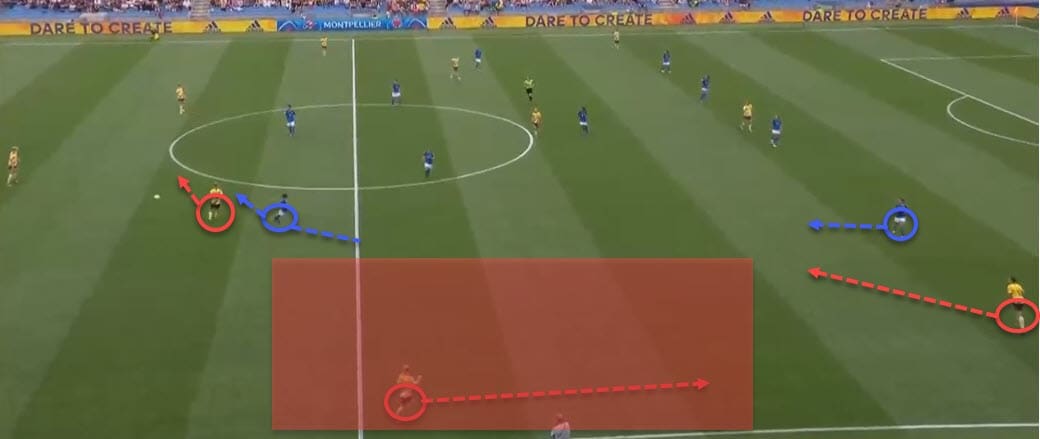
Once that has been achieved and Carpenter can sprint into the free space, the ball is then quickly progressed forward and it reaches the final third in just a couple of short touches or one long one, exploiting the young defender’s exceptional pace.
The opposition has trouble reacting in time and it usually leaves Australia entering the danger zone and getting into great crossing positions, as shown in the image below.
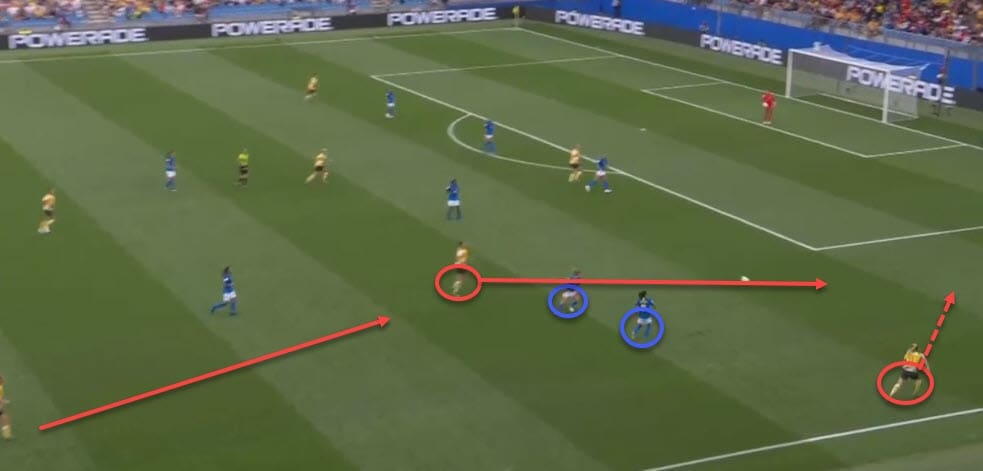
This is a rather effective tactic that sees them manipulate the opponent’s movement and then create space for themselves but it’s easier said than done. The Matildas enjoy a good passing game and will usually keep the ball to themselves for the majority of the time. We have seen them build all the way from the back in both games, taking the reigns and dictating the tempo.
But one flaw that sometimes also follows this pattern of play is the inability to break the lines and slow ball circulation. In their tiki-taka-like gameplan, Australia were known to overcomplicate things, let the opposition sit deep and weather the storm completely. That, combined with misplaced passes, gave them headaches and showed they can be ineffective when facing a well-organised defensive block.
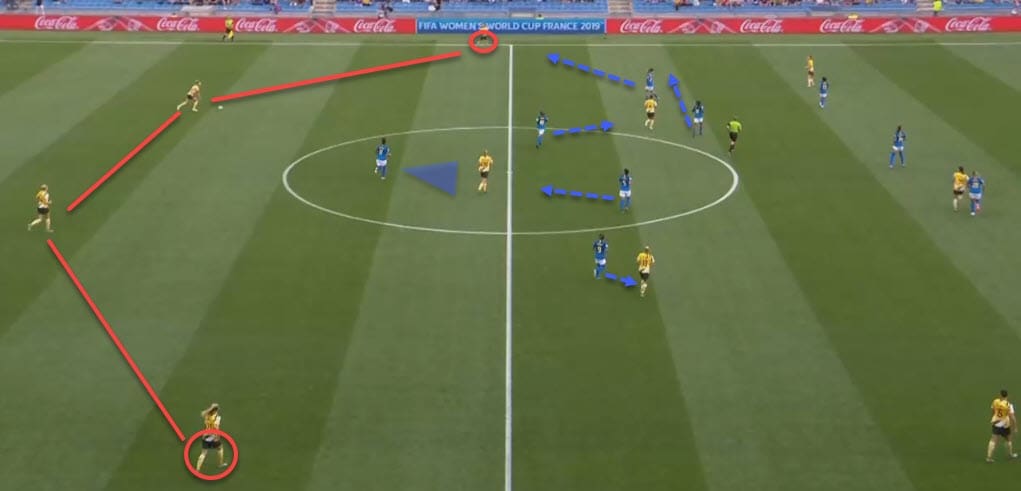
Notice, for example, in the image above how Brazil effectively nullify their build-up with a compact block. They put no pressure on the ball carriers but instead use their forward to screen the pivot, Emily van Egmond, who usually drops deeper to carry the ball but is now unable to receive due to tight marking.
The forward line shifts as the ball circulates from one side to the other; all the channels toward the middle of the pitch are blocked and that forces the full-backs to stay deep as opposed to rushing forward with pace because Australia would otherwise have no outlets to use bar launching long balls into the forwards. If Jamaica can utilise this and manage to slow the ball down and stay compact, they just might dampen Australia’s attacks.
Jamaica’s usual approach
And this will be crucial if Jamaica are to survive their attempts. In general, Australia’s counterparts are a well-drilled team in defence, one that prefers the conservative approach and will likely let the Matildas dominate possession while they sit back and repel them, waiting for the right moment to strike.
As a general rule of thumb, we know they prefer the 4-2-3-1 formation but this often switches to a 4-4-2 when facing tougher opposition who are more likely to control the game. The key is to press Australia well and coordinated so that the ball can be won at the right moment. Against Italy, they failed to do so and it cost them five goals in their nets so now they’ll have to execute this perfectly against a team that can, in theory, exploit their weaknesses even better.
But this might be a problem for them. Generally, Jamaica leave too much space for the opposition and when they deploy their 4-4-2 defensive block, the two forwards press the opposition’s centre-backs but no one closes down the defensive midfielder and she is often left alone. Closing down Van Egmond will be key because if she is free, Australia’s attack will flow.
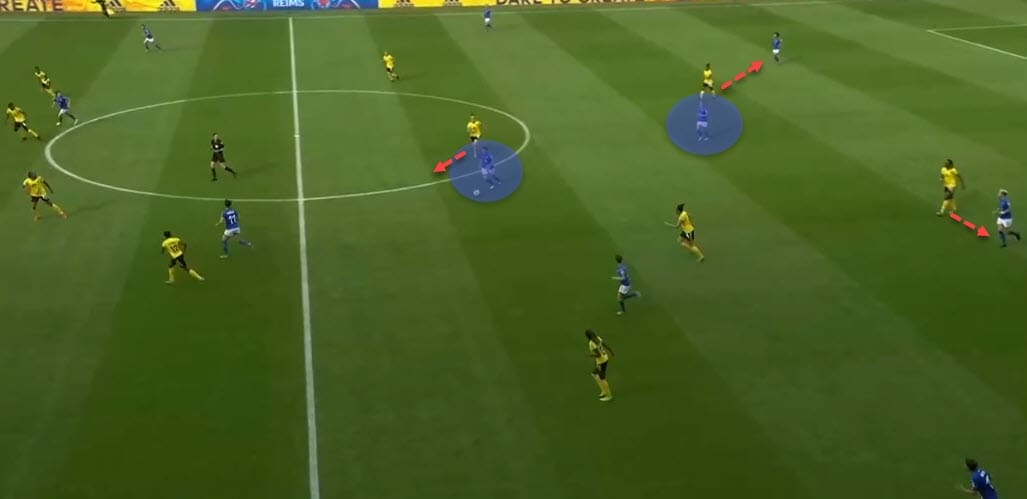
Notice above how both midfielders have no markers or, at least, they were not covered in time, which happened repeatedly throughout the game, to Jamaica’s great detriment. Both forwards, in that setup, stay higher up the pitch, however, and that might be useful, as we will see later on.
It seems that regardless of a system implemented, whether it’s the 4-4-2, which we can maybe even expect against Australia, or the usual 4-2-3-1, Jamaica do tend to leave their forwards with less defensive responsibility and they stay higher up the pitch despite the team retreating to a low-block.
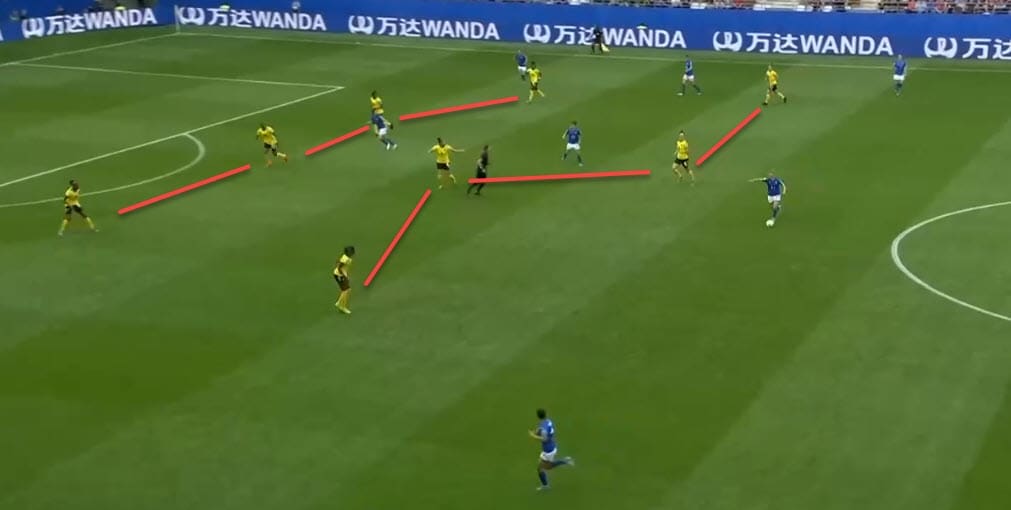
Notice in the example above how Jamaica reset to two banks of four while the forwards stay high and are not even in the image while Italy circle around the block. There are two sides of this coin but looking specifically at this game against the Matildas, this could be effective if executed well.
We already know how aggressive Australia are in their approach and especially when they put bodies in the opposition’s half with both full-backs spending most of their time on the other side of the pitch. Here, in the example below, you can see how their opponents have already exploited this before.
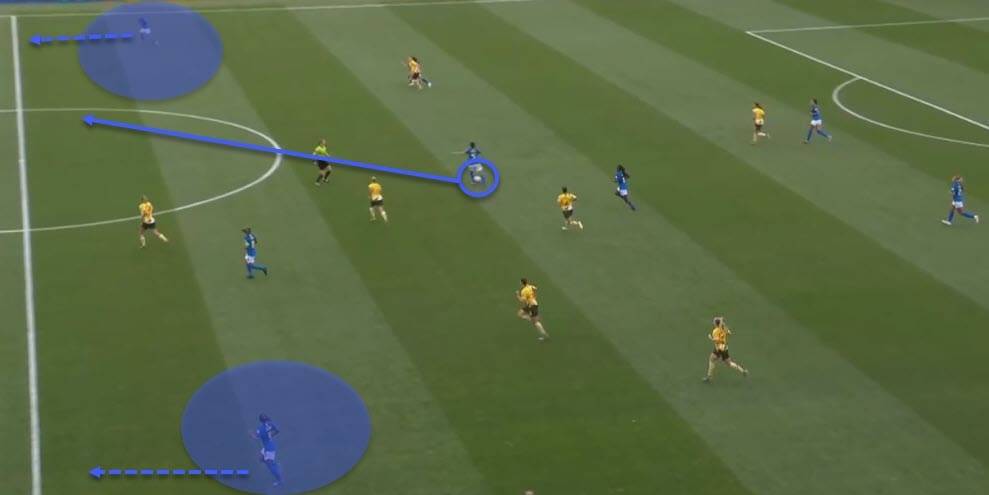
If the ball is lost, Australia is extremely vulnerable in transitions, which is, coincidently, something Jamaica excel at specifically for the reason we’ve mentioned above with their forwards often maintaining their high positioning.
Whether they deploy a formation with two or three forwards is irrelevant in the grand scheme of things since both will give them options to hurt the Matildas on the counter. Below we can see how that is exploited with three forwards leading the transition.
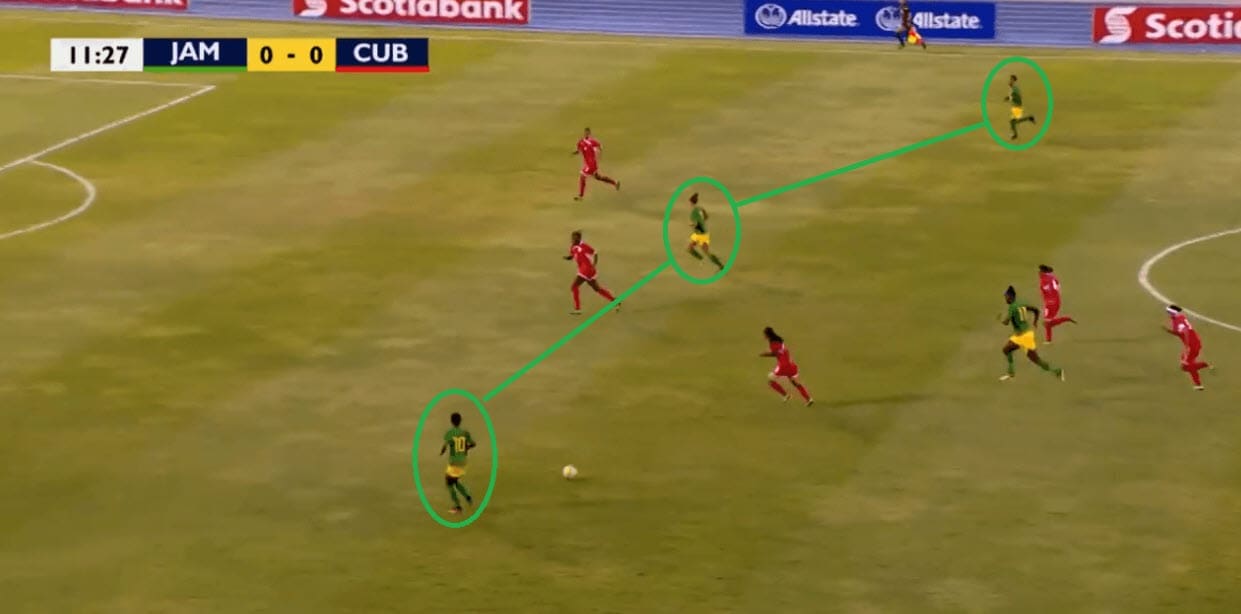
This brings us to the key aspect that might make or break the game for both of the teams: pressing and withstanding the press.
Pressing
Interestingly enough, even though Australia and Jamaica are very much expected to approach this game differently, both absolutely need a win and both could, with that in mind, go all out for it. In a usual scenario, we could almost certainly expect the Matildas to press high up the pitch and try collapsing on their opposition, which is pretty much guaranteed to happen, but Jamaica would, in big games like this one, generally revert to a much more passive approach.
We have already seen as much in their last game against Italy but that doesn’t mean they never utilise the high-press. On the contrary, the Reggae Girlz are known to play a high tempo style of football and since this will be their last chance for a win or any points for that matter, we can expect them to come out swinging.
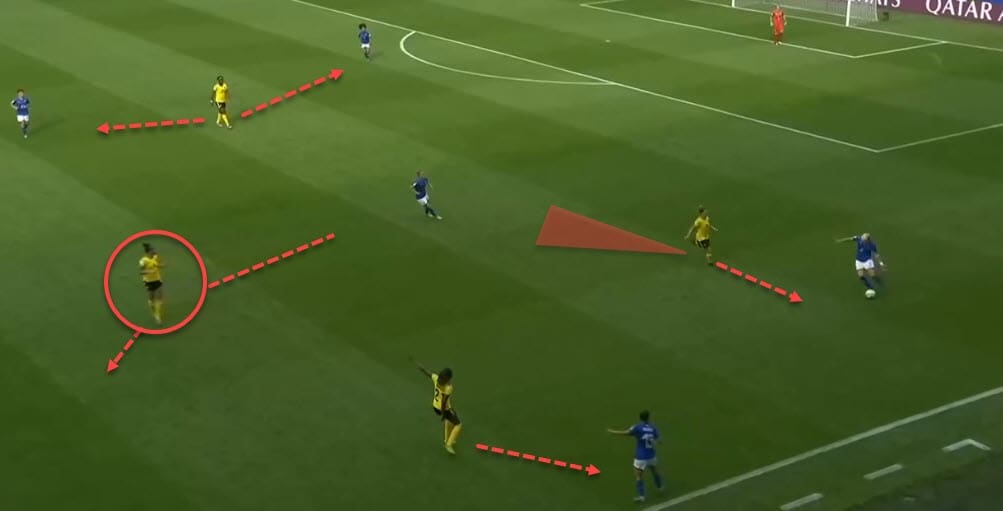
The above image is an example when their press was successfully implemented. Notice how they block the channels and screen the other options rather well with one of their players (circled in red) willingly leaving their marker to close the potential channel. She does end up intercepting the ball in the end.
However, Jamaica have been guilty of leaving their opposition with too much space and not pressing well enough before, which is also true for Australia (at times) as well. But the Matildas do have a somewhat more complex system in place.
In their usual setup, Sam Kerr, the striker, will pressurise the goalkeeper while two wingers do the same with the centre-backs. But the wingers also have the job of screening the full-backs, which is an interesting approach that can also be seen at Liverpool and the way they press their opponents.
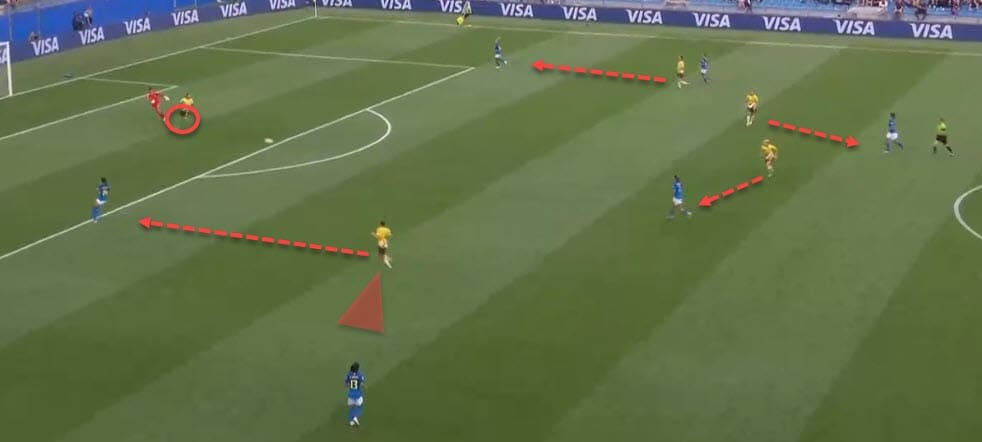
The defenders also have a specific task of tracking and covering all the links their opposition have between defence and midfield. The pivot is seemingly free but is then lured into what is sometimes referred to as a pressing trap. The defensive midfielder is left unmarked, which prompts the goalkeeper to try and pass the ball towards her but what they are usually not aware of is the player lurking behind and right at the blindside.
This often results in the midfielder receiving the ball but then losing it shortly after due to them falling into the said trap. Even though this is most likely not an entirely developed strategy for the Matildas since it’s not used often enough to warrant such a claim, they have seemingly used it on a couple of occasions so far. Another approach is far simpler and utilises cornering the opposition, outnumbering them on the flanks and then collapsing on the ball-carrier.
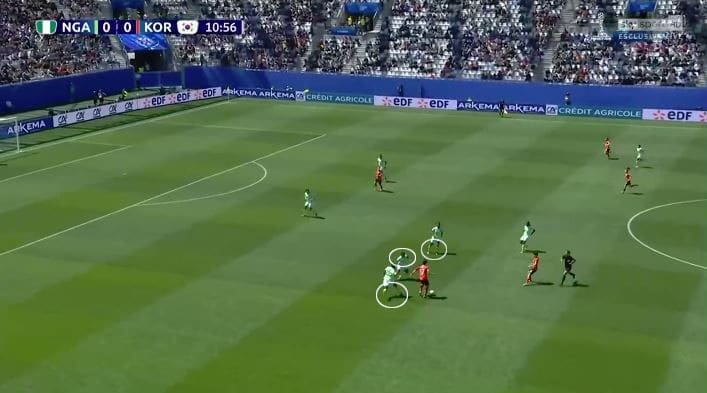
Notice how Australia make sure they are on even terms with the opposition and have them cornered before they collapse and take the ball while already being in the danger zone. A quick shift from defence to attack puts them into an advantageous situation in seconds with at least three options available once possession has been regained.
The second part, collapsing and the options presented to them afterwards, can be seen below.
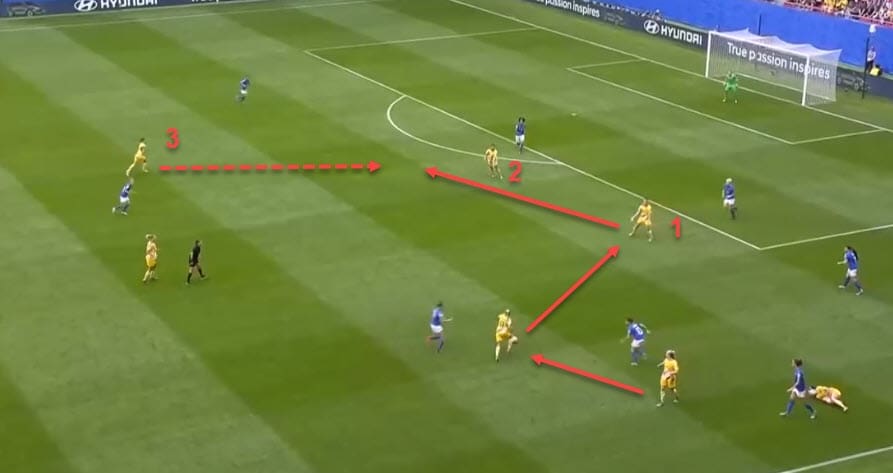
Jamaica usually have difficulties bypassing this kind of pressure so it’s definitely something Australia will look to utilise. Strictly because of that reason, they just might leave the possession to their opposition and stay compact and narrow, limiting the Matildas in their build-up and counting on those quick transitions.
Brazil were confident they could beat Australia in the air, so they sat tight in their compact block, leaving Australia the flanks open while they cleared almost all and any crosses that came their way. Jamaica generally put bodies in the central areas in order to force their opposition wide.
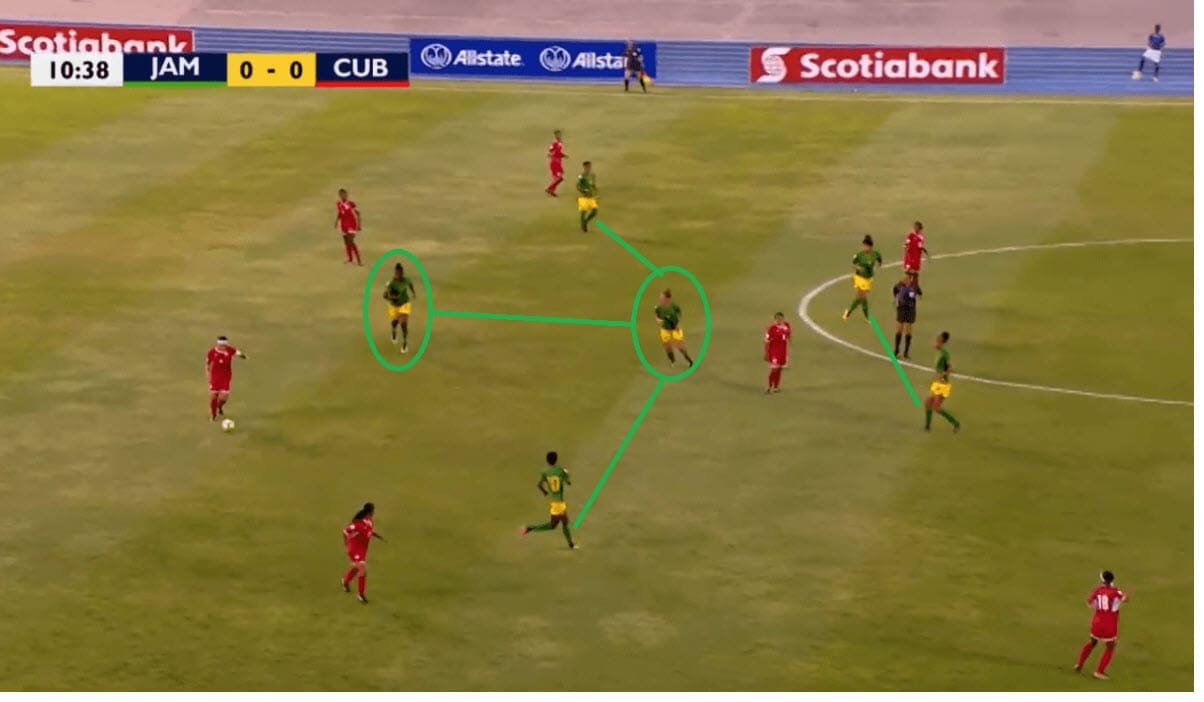
It wouldn’t be a surprise to see this implemented as well. Jamaica are also quite efficient at set-pieces so they should be confident enough in beating the Matildas in aerial duels and let those balls arrive from the flanks. This, however, comes with a certain dose of risk. Whether or not they are ready to take it remains to be seen.
Conclusion
The last game for these teams is quite a big one and a lot is still on the table. Australia are big favourites on paper, but as we have already seen in this FIFA Women’s World Cup, this rarely has any impact on the match itself.
Anything can happen but a couple of things are still certain: death, taxes and Sam Kerr scoring and doing a flip while celebrating.
If you are following the FIFA Women’s World Cup 2019 then you will find our FREE tactical preview magazine the perfect compliment to the tournament. You can download it HERE – each nation is previewed and we also profile their key player and young player to watch. Enjoy!

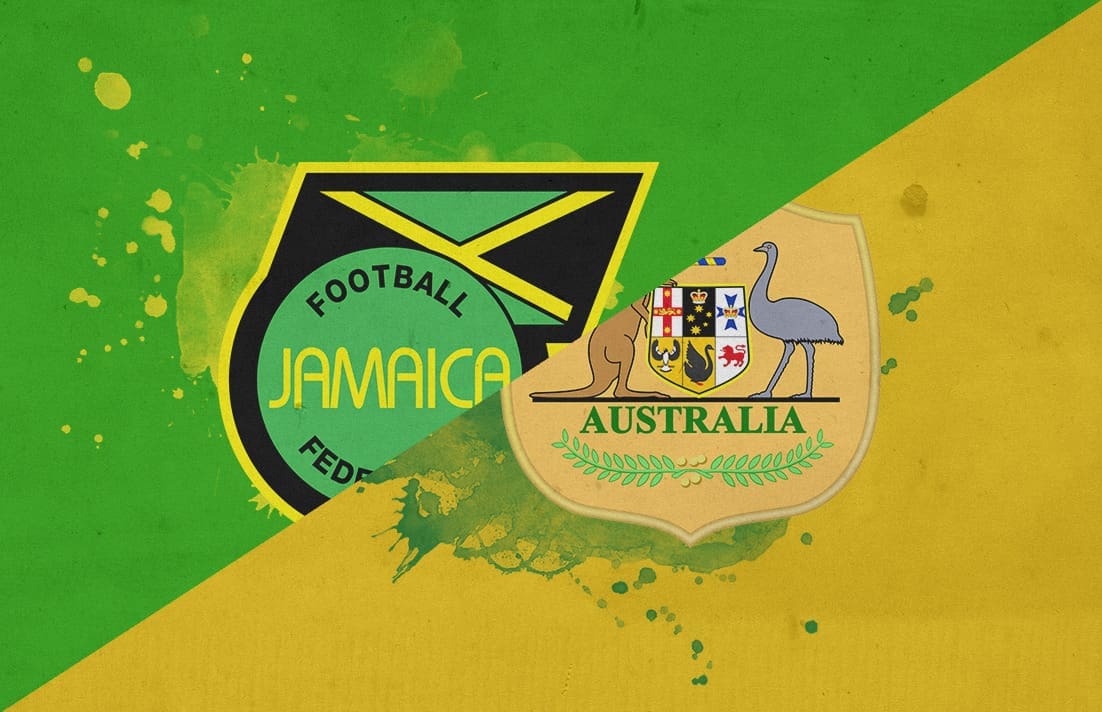




Comments